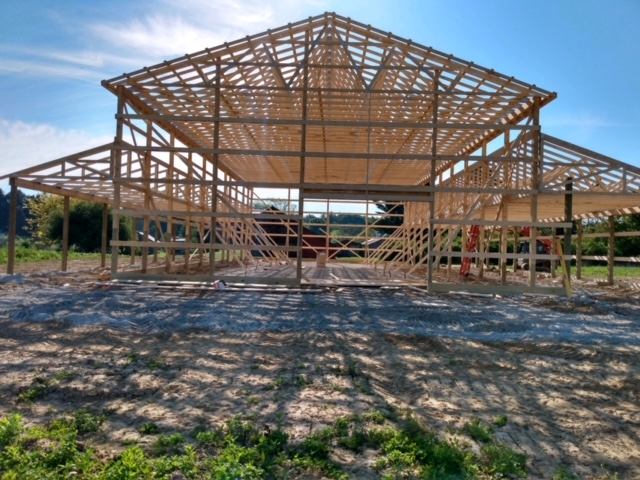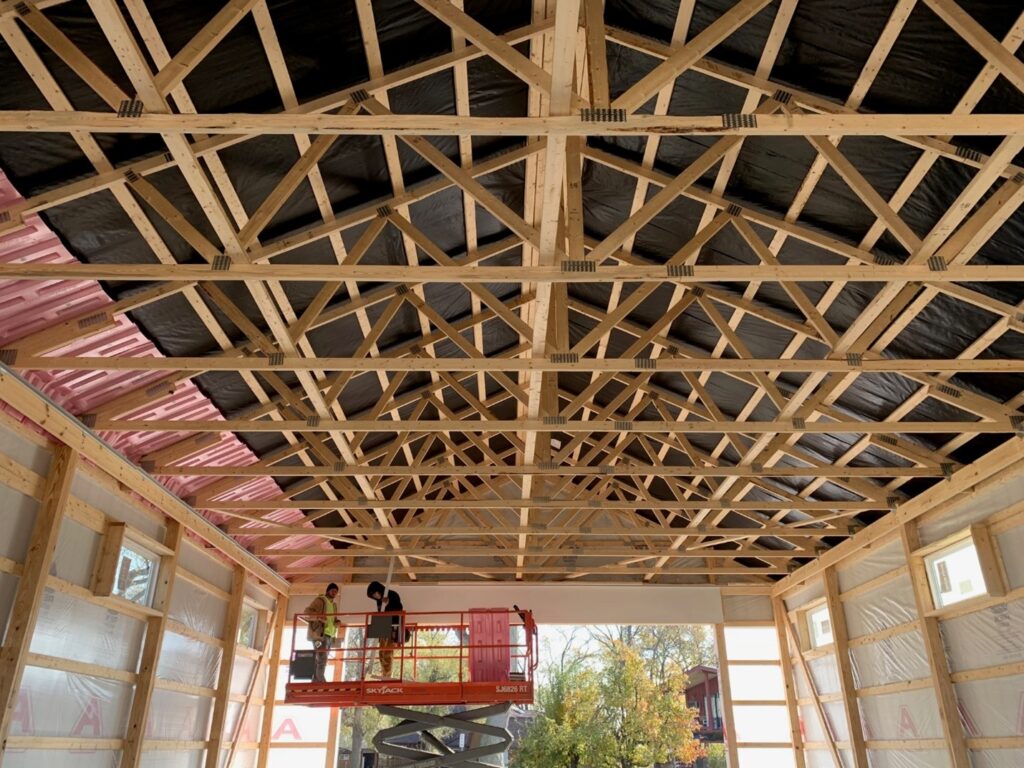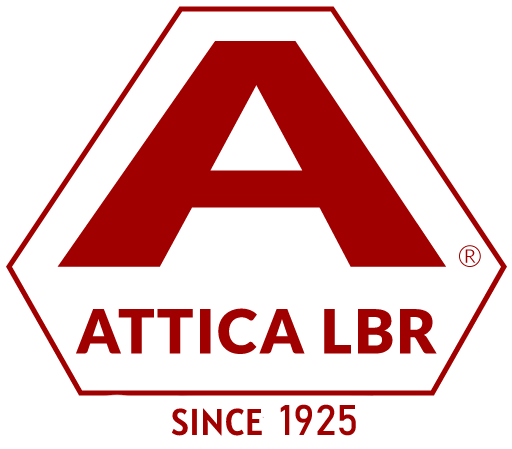Steel Trusses vs. Wood Trusses on Pole Barns: Why Wood Trusses are a No Brainer
By Jenny Moses
When constructing a post-frame building, there are several types of trusses that can be used for the roof support system. The two most common materials used for trusses are metal and wood. Here are some common types of metal and wood trusses used in post-frame construction:
Table of Contents

Metal Trusses:
Pitched Trusses: Pitched trusses are designed with angled top chords and can be used to create a pitched or sloped roof. They are commonly used in post-frame construction for residential and commercial buildings.
Scissor Trusses: Scissor trusses are designed with angled bottom chords that cross each other in the center, providing increased ceiling height and a more dramatic appearance. They are often used in post-frame construction for residential buildings to create a vaulted or cathedral ceiling.
Mono Trusses: Mono trusses are designed with a single top chord and are often used in post-frame construction for larger clear spans.
Wood Trusses:
Common Trusses: Common trusses are the most basic type of wood truss and are often used in post-frame construction for smaller buildings with simpler designs.
Attic Trusses: Attic trusses are designed to provide extra storage space in the roof area of a post-frame building. They are often used in residential post-frame construction.
Scissor Trusses: Similar to their metal counterparts, wood scissor trusses are designed with angled bottom chords that cross each other in the center, providing increased ceiling height and a more dramatic appearance. They are often used in post-frame construction for residential buildings to create a vaulted or cathedral ceiling.
Raised-heel Trusses: Raised-heel trusses are designed with an extended top chord that provides extra space for insulation and ventilation in the roof area of a post-frame building. They are often used in residential post-frame construction to improve energy efficiency.

The type of truss used in post-frame construction will depend on factors such as the building design, load requirements, and aesthetic preferences. It’s important to consult with a professional contractor or engineer to determine the appropriate truss system for a specific post-frame construction project.
When it comes to constructing a building, metal trusses have several advantages over wood trusses. Here are some reasons why metal trusses may be a better choice for certain construction projects:
Durability: Metal trusses are highly durable and resistant to rust, corrosion, and damage from pests or weather. They are a long-lasting option that requires minimal maintenance over the lifespan of the building.
Strength: Metal trusses are able to support heavier loads than wood trusses and can span longer distances without the need for additional support columns or posts. This can be beneficial in larger construction projects.
Design Flexibility: Metal trusses can be customized to fit a variety of building designs and can be engineered to meet specific load requirements. They are available in a range of sizes and shapes to fit any design preference.
Fire Resistance: Metal trusses are highly resistant to fire, making them a safer option for buildings where fire safety is a concern.
Pest Resistance: Metal trusses are not susceptible to damage from pests such as termites, which can be a problem with wood trusses.
Reduced Waste: Metal trusses are often manufactured off-site, which can reduce waste and minimize the environmental impact of the construction project.

When it comes to constructing a building, wood trusses have several advantages over metal trusses. Here are some reasons why wood trusses may be a better choice for certain construction projects:
Flexibility: Wood trusses can be easily customized to fit a variety of building designs and can be engineered to meet specific load requirements. They can also be easily modified on-site if changes to the building design are necessary.
Ecologically Friendly Material: Wood is a renewable resource and using wood trusses in construction can contribute to sustainable forest management practices. Additionally, wood trusses are often produced using environmentally friendly manufacturing processes, such as using recycled materials.
Economy: Wood trusses are generally less expensive than metal trusses, particularly for smaller construction projects. They can also be easier and faster to install, which can save on labor costs.
Strength and Sustainability: Wood trusses are a strong and durable option that can withstand high wind and snow loads. Additionally, wood is a natural insulator, providing better energy efficiency than metal trusses.
Energy Efficiency: As a natural insulator, wood trusses can help to reduce energy costs and improve energy efficiency in the building. This can lead to long-term cost savings and a more sustainable building.
Aesthetic Freedom: Wood trusses have a natural, warm aesthetic that can be appealing in a variety of building designs. They can also be stained or painted to match other design elements in the building.
In conclusion, wood trusses offer several advantages over metal trusses in terms of flexibility, sustainability, economy, strength, energy efficiency, and aesthetic freedom. While metal trusses may be a better choice for larger construction projects with specific load requirements, wood trusses are often the preferred choice for smaller buildings and those with unique design needs. Ultimately, the choice between wood and metal trusses will depend on the specific requirements and goals of the construction project. It’s important to consult with a professional contractor or engineer to ensure that the chosen truss system meets all necessary building code requirements and is structurally sound.
Wood Roof Trusses Forum https://www.reddit.com/r/Construction/comments/ssp0hf/what_the_hell_is_going_on_with_truss_manufacturers/
Wood Roof Trusses Forum http://Wood Roof Trusses Forum https://www.garagejournal.com/forum/threads/roof-truss-problem-new-construction.328688/
Wood Roof Trusses Forum https://www.reddit.com/r/homestead/comments/82gnu5/pole_barn_kit_vs_trusses_only/
